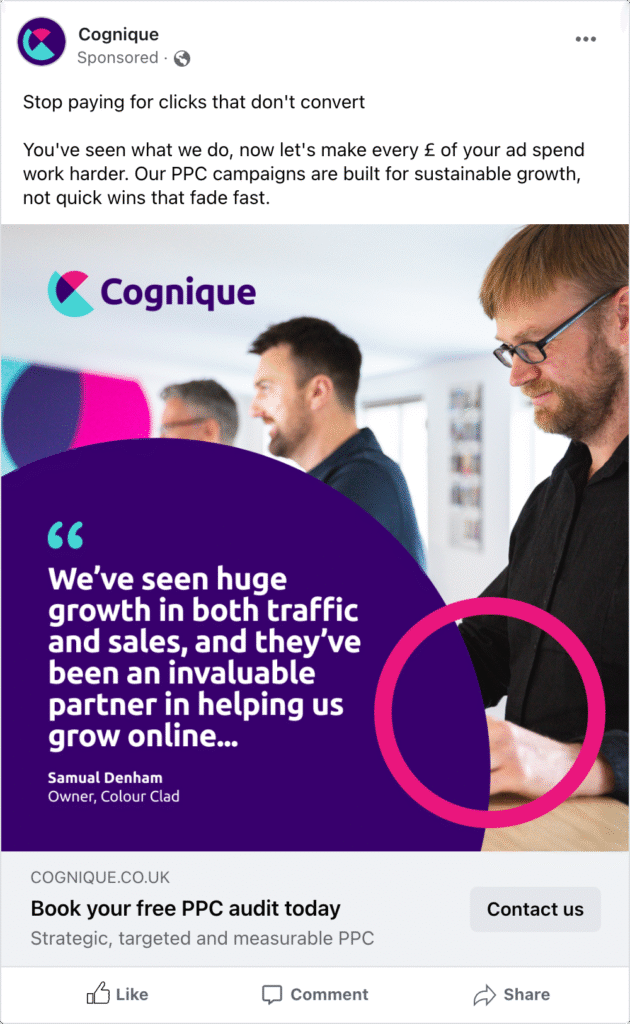Remarketing is exactly what it sounds like – the ability to market your products again to people who have previously visited your website. When people who have visited your website go on to browse elsewhere, you can re-target them with customised PPC ads.
How does remarketing work?
When someone visits your website, a file called a ‘cookie’ is created which (with the user’s consent) stores information about their visit. This information can then be used to retarget specific visitors with ads for your business later.
Remarketing is usually done using a remarketing list or pixel tags.
1. Remarketing list
A remarketing list records users who visited your website and performed a certain action. This action could be as simple as visiting a specific page.
A remarketing tool then adds this user to your remarketing list for people who visited this page. Using this data, a remarketing campaign can be set up to display relevant ads relating to the content of that specific page – far more effective than generic, impersonal ads.
2. Pixel tags
Also known as tracking pixels, pixel tags are small pieces of code that permit the placement of cookies on a user’s web browser.
If you create a remarketing campaign for your ads, each platform will give you a pixel tag code that needs to be added to your website. This will enable you to serve tailored ads to visitors to your website based on how they engaged with it.
Types of remarketing
1. Dynamic remarketing
Through dynamic remarketing, you can show someone who visited your website more personalised ads. Dynamic remarketing campaigns serve users ads featuring the specific product or service they viewed on your website.
This type of remarketing works for B2B and B2C businesses, reminding potential customers of something they were genuinely interested in about your business – rather than bombarding them with impersonal, forgettable ads.
2. Social media remarketing
Social media remarketing targets visitors who engage with your business’s social media content.
These targeted social media ads can be set up to remind users of a product or service they looked at on your website, or offer a promotion as an incentive to revisit your website. See our example below:

Example of a clean, modern digital re-marketing visual for social media showing a testimonial for Cognique’s PPC offering.
3. Email remarketing
If your business is set up for email marketing and has built up a useful email contact list, email remarketing is a useful strategy.
Email remarketing campaigns can be set up to send specific ads to visitors who opened a previous email from your business, abandoned their shopping cart or form on your website, etc.
Benefits of remarketing
1. Recapture lost traffic
Remarketing can be incredibly effective as you are advertising to people who have already visited your website – and are likely to be interested in what you offer.
It’s pretty normal to leave a website without taking immediate action (making a purchase, filling in a contact form, etc.). Remarketing is great way of keeping your business in your visitors’ minds with personalised, eye-catching ads.
2. Increase high value conversions
Remarketing can work especially well for products and services that have a long customer decision journey, such as:
- High value products or services.
- Products or services that require extensive research before purchase.
When used effectively, remarketing helps your business reconnect with users once they’ve had the time to consider their options and do their necessary research.
3. Tailored to meet your goals
Whether you want to recapture lost visitors, drive attention to a specific page or product on your website, or simply raise awareness of your brand, remarketing can be tailored to suit all.
We apply different PPC strategies and ad messaging to help meet our clients’ goals. The adaptability of remarketing and the ease with which the performance of different ad campaigns can be tracked drives a strong ROI.



